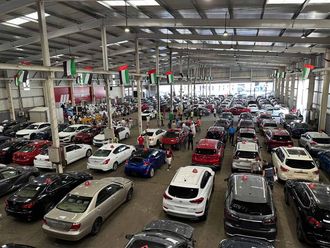
It's time to talk about why using original cartridges rather than clones is so vital. This is something that everyone should be aware of, especially representatives of small and medium-sized businesses: choosing clones can result in significant losses.
1. If you're a businessperson who needs to make key client presentations on the spot, or a student who needs to print term papers and abstracts on a regular basis, cutting corners on original products might lead to missed deadlines and plans. Non-original cartridges are not fit for use immediately after unpacking in 49% of cases. Furthermore, an alternate cartridge may not match the printer chip or fit within the parameters, resulting in a waste of money.
2. Before being released, the original cartridges are thoroughly inspected to guarantee that the colors match the anticipated outcome. In addition, ink or toner, especially if it is very inexpensive, may be of poor quality, which is inappropriate for printing essential documents. Because non-original cartridges have a low optical density, the colors will fade when printed.
As a result, you'll end up embarrassed in front of clients while displaying faded diagrams, or you'll have to reprint the same thing over and over again. Thus, the never-ending cycle of tweaking printer settings, wastepaper, and ink will commence. The Color Cartridge Reliability Comparison Study of alternative red, yellow, and green cartridges is the worst thing in printing. You will most likely get dirt on paper instead of high-quality images. Furthermore, the ink in a clone cartridge may dry out before the expiration date, which is not the case if you buy an original cartridge.
3. Stripes, streaks, and pale spots on a printed page are all things you don't want to see. Such a scenario is almost certain to occur if you use non-original cartridges. According to a survey conducted by SpencerLab among small and medium-sized enterprises, the Color Cartridge Reliability Comparison Study only showed the optimal result of such cartridges in 33% of situations. The remaining printed copies were sorted into the following categories: Only 46% were eligible for internal usage, 3% for reading and making edits, and 18% were only suitable for drafts. The original cartridges, on the other hand, functioned admirably: in 98% of cases, the outcome was great, 2% were suitable for internal use, and none were defective.
4. Clones or unoriginal products diminish the life of a laser printer, according to 80% of printer specialists who have worked with both original HP and non-HP toner cartridges. The mechanism, for example, could malfunction, causing the toner to wake up or attach to the thermoblock. The major issue with non-original ink cartridges is that they dry out or leak ink. After that, the gadget will either need to be repaired or disposed of. If we're talking about office equipment, a malfunctioning printer will result in downtime, lost employee time, and, as a result, lost money. Saving money on original cartridge is unlikely to be more profitable than replacing the entire gadget. It should also be noted that damage caused by the use of a non-original cartridge is not considered a warranty claim. As a result, there is no way to exchange or repair the printer for free.
5. Ink in native cartridges does not dry out, unlike pigments used in non-original cartridges, even if the printer is not used for a long time. Due to the ink composition, such a cartridge can be stored for up to 90 days in a home printer and up to 180 days in an office printer without degrading print quality.
6. When developing cartridges, we keep in mind measures to reduce our impact on the environment and to that end, we make sure that all our cartridges are recyclable. We work with selective manufacturers that produce fresh cartridges or other products for printing – all of which have minimum impact on landfill. Alternative producers, on the other hand, lack collection locations for cartridges that have depleted their resource and end up in landfills after being used. Furthermore, the majority of these clone cartridges are constructed of low-quality plastic that can only be destroyed.
All of the above arguments apply to printers that do not use cartridges and instead use refillable ink blocks. Original ink is also required for such equipment; otherwise, the print quality may suffer.
Just imagine the reprint non-originals will force you to: extra cost on wasted paper, electricity, toner or ink, and most importantly waste of your time which is priceless! Buy nice or buy twice.












